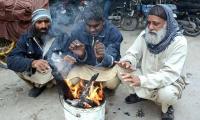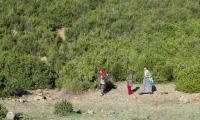A combination of the Fata reforms commission’s report, political pressure, media hype and threat of dharna pressurised the federal government into deciding on a merger of Fata with Khyber Pakhtunkhwa. The commission’s report is based on interviews from the elite and semi-elite of Fata. Even an opinion poll survey of a few thousand Fata people on a scientific basis could have made this report more credible.
It is quite amusing that on the basis of a report and not on the basis of any referendum the fate of a whole region is decided. Why then has the same not been made constitutionally possible for Hazara or southern Punjab area to the get status of new provinces? The people of these areas can also easily give dharna threats, as in the case of Fata, to achieve their objectives rather than following the constitutional path. Why did Pakhtun nationalists wait half a century to rename the province when they could do it via a dharna in a few days? Another dangerous trend is that those Pakhtun leaders who had different views on this issue were treated as traitors of the Pakhtun cause.
The integration process may be a viable option but the method adopted to achieve it was not desirable. When sanity does not prevail against political pressure, reason and argument are suppressed with the threat of a dharna, and opposing views are silenced instead of building consensus on an issue, then the decision to integrate will always be debated and challenged.
In this debate, there are two parties – Fata and KP. It is strange that KP is playing a passive role in this debate. Economists, scholars and intellectuals from KP should analyse this issue and give their opinion on the merger and its impact on the economy, security and law and order issues of KP.
A KP political leader proudly claimed that after the merger, KP will become the second populated province of Pakistan after Punjab. That is right but this number two province will have a majority of poor, illiterate, and unemployed people. This can be verified by studying the development statistics of KP and Fata.
KP is a poor province and Fata has virtually no economy. Agriculture is only for subsistence living. There is no industry or trade. There are a few bazaars with a limited number of shops. More than 50 percent of the people of Fata live below the poverty line. There are no prospects of revenue generation there. KP will have to finance its development and running expenses for an unforeseen future. As far as Fata’s development is concerned, there is a dispute on every piece of land and mountain in the surrounding tribes.
The Mullagori tehsil of Khyber Agency has the world’s third largest reserve of quality marble but due to tribal disputes, mining cannot be done on modern lines. Many irrigation schemes in the tribal areas could not be initiated due to these problems. Coal-mining in Dara Adam Khel could only be started after countless jirgas. There are also serious sectarian problems in the Kurram and Orakzai agencies. These two tribal agencies have been physically almost divided among Shia and Sunni tribes, with continuous infighting.
Will this merger be of any economic benefit to Fata? KP has been politically and economically dominated by the elite Khans of Peshawar, Charsadda, and Mardan. Other areas of KP – such as Chitral, Kohistan, Dir, Swat etc – have been neglected and underdeveloped. Any funding from the federal government will go to the provincial exchequer and will be spent on the districts of the chief minister and the privileged few. Currently, Nowshera and Swabi are getting the lion’s share from the KP budget; in previous governments Mardan and Bannu got more funds. It is feared that in the existing system, the tribal areas will be relegated to poverty-ridden, underdeveloped areas in the backyard of KP.
Moreover, it will be difficult to govern the combined province – one system through the civil bureaucracy, police, courts and the other system of the tribal areas on the basis of tradition (or Rewaj). How will these two systems reconcile? How will these two peoples brought up in different systems with different world views coexist?
Managing Fata is a tricky business. There are large inaccessible areas where there is no state control. Political agents had to give jobs to people in order to establish schools or health facilities. If tribes did not allow construction of a road in an area then they were given contracts for constructing those roads. In the Mohmand Agency, political authorities hired female teachers from Peshawar for girls’ schools and gave them transport facilities. In the 1980s, enrolment rate in primary schools was even higher than the national average in the Bajaur Agency.
The economy of KP is already in a bad shape due to its continuous confrontation with the federal government. While Punjab is establishing new technical education institutes, the KP government has established more than a dozen general education universities in the public sector which are producing thousands of graduates in disciplines that have no market value. The teaching staff of these universities, from grade 18 to 21, are more than all the civil service officers of KP. These universities will prove to be white elephants in terms of development and recurrent expenditure and pension liabilities.
The KP government has always blamed the federal government for its economic problems and has not improved its efficiency to increase resource mobilisation in the province. It relies heavily on hydropower profit from the Tarbela Dam located in Hazara. The merger will push mainly Hindko-speaking Hazaras to break away from KP. In the absence of hydro profit, and with the economic burden of Fata, KP’s economy will collapse.
Some political parties are trying to take credit for this merger in order to cash it in the 2018 general elections but will they succeed? The last ANP government tried to take credit for renaming NWFP to KP but it suffered a humiliating defeat and could only win one National Assembly seat (from Mardan).
In the final analysis, the poor people of Fata must benefit from any arrangement. These are daily wagers, security guards or others doing odd job in the big cities of Pakistan. The common people of Fata have had neither any say nor any role in this integration. They are the ones who must be taken on board. Before making any decision, extensive planning and complete homework must be done. Otherwise this decision would have disastrous consequences for the people of Fata and KP.
Word of caution: The founder of Pakhtun nationalism, Abdul Ghaffar Khan, used to say in public meetings: “Pakhtuns are united in one thing – that they will not unite”. Play politics with this issue, make money, but please don’t try it.
The writer is a Peshawar-based academic.
Email: alishahzadpk4@yahoo.com
There are over 11 million Pakistanis settled abroad, out of which around six million work in Gulf and Middle East
This year alone, US Treasury would have to roll-over $10 to $14 trillion in maturing short-term debt
Tear gas no longer marks just protest sites; it paints entire cities as battlegrounds but then again, PTI did it first
Political structures and governance systems have been central to economic and social development
It is confirmed now 40 Pakistanis had died after boat of migrants had capsized in sea near Greece
Many people believe that in future, AI will play an even more significant role in their lives







